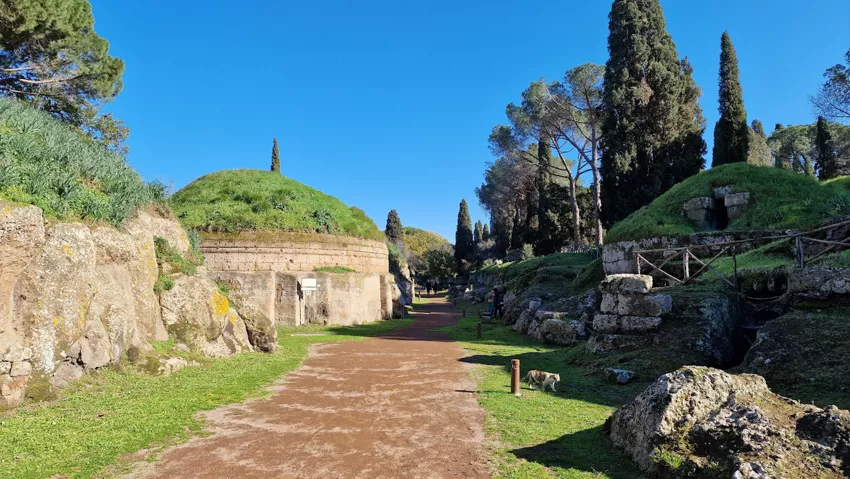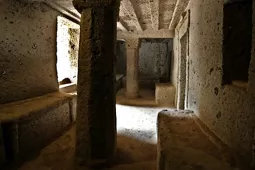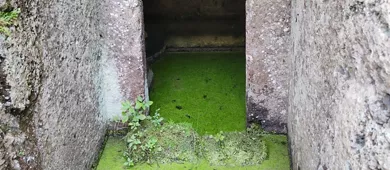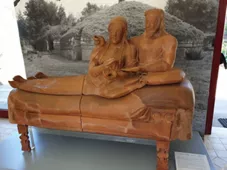This content was automatically translated. View the original text.




Overview
A UNESCO World Heritage Site since 2004, the Etruscan Necropolises of Cerveteri, together with those of Tarquinia, are the earliest example of Etruscan funerary cities, located 40 kilometres from Rome.
Cerveteri leads to the Etruscan Sorbo necropolis and the Banditaccia necropolis, among the most impressive in the Mediterranean Sea. The first is smaller in size and houses large monumental burial mounds, evidence of pit burials, “cube” tombs and hypogea excavated in the tuff rock from different eras. We recommend visiting the monumental Regolini-Galassi tomb found in the 19th century completely intact and still with its funerary objects, consisting of gold, silver and bronze furnishings, on display in the Gregorian Etruscan Museum in the Vatican Museums.
The Banditaccia necropolis, meanwhile, contains thousands of tombs organised in a similar way to an urban development, with streets, squares and quarters. A kind of reproduction of the “city of the living”, it is an important testimony to the domestic architecture of the Etruscan population, from its foundation to the Hellenistic period. The 20-hectare site dates to the 9th century BC and contains various types of tombs. You can also see trenches dug into the rock and mounds, often containing more than one tomb, in the form of huts or cottages, with richly detailed structures.